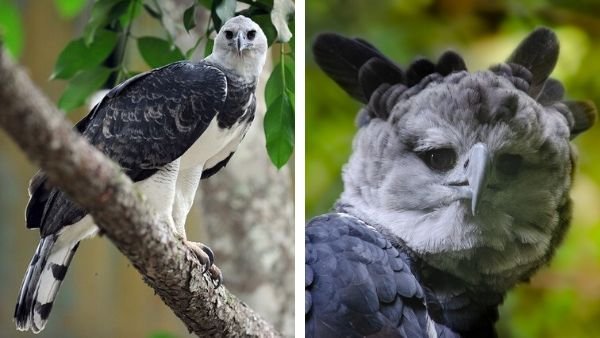
Characteristics, harpy eagle hunting, feeding, habitat, mythology, behavior and reproduction; is it in danger of extinction? Cosmogony.
The harpy eagle or greater harpy (Harpia harpyja) is one of the strongest birds of prey in the world. It is fearsome for its powerful legs and sharp claws up to 15 cm long, and its strong curved and sharp beak.
It is very difficult for any animal weighing less than 20 kilos to be saved from her ferocious attack in the jungle where she reigns.
It is a bird specialized in the skill of attack and is considered a top predator in the food chain (Aguiar-Silva, Sanaiotti, Luz 2014).
✅ Characteristics of the Harpy Eagle
The harpy eagle is one of the four largest birds in the world, among the 292 existing species of raptors, and among the 96 that live in the Neotropics. Of all of them, it has the longest claws (Múñiz-López 2016).
Its plumage is an elegant combination of shades ranging from black to white, passing through various shades of gray.
Its head and neck are gray. The chest and belly appear almost white, with light gray tones. The imposing crest, which moves when it feels in danger or is under stress, is black or very dark gray.
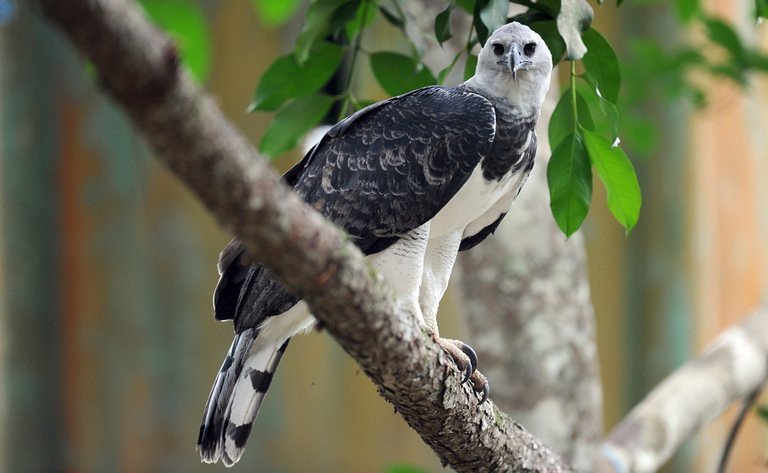
The bill and the upper part of the tail are black. The legs are yellowish. The head feathers, except for its crest, are lighter in color than the body feathers.
Its short wings (180 to 200 cm long), wide and rounded, allow it to fly agilely in the forest, up and down, or upside down, with great ease.
Its excellent three-dimensional view allows it to pick up moving targets at distances from less than a meter up to 200 meters.
✅ Harpy eagle hunting
This beautiful bird, albeit rapacious and dark, patiently stalks its victim for many hours to attack it; and it almost never fails in its attempts.
When it sees its prey, it will stealthily and quickly approach it at a speed that can reach up to 80 km per hour, take it in flight with its powerful claws and lift it up, and then, on the ground, tear it apart with great precision with its strong beak, pressing it with his weight, which ranges from 8 to 9 kilos.
Whether its prey is a porcupine or a small deer or a pig, or an elusive snake or, easier still, a slow-moving sloth, which is his preferred victim, virtually nothing is safe.
✅ Feeding of the harpy
The sloth (Bradypus variegatus, Coleoopus dactylus) makes up 80-90% of the harpy’s diet, but it feeds on more than 70 vertebrates, including small mammals, birds, reptiles and primates.
They feed on different birds, such as herons and macaws, and small animals, ranging from an iguana to a small deer, a porcupine or a sloth.
Harpies according to Greek mythology
The harpies were, according to Greek mythology, legendary beings in charge of taking food away from Phineus, king of Thrace, so that he could not eat; this was a punishment imposed by Zeus for having revealed the secrets of the gods of Olympus.
They were monsters that had the face of a woman, ears of a bear, and the body of birds of prey, with powerful and sharp claws, that brought with them the evils of the world: storms, plagues, misfortune and, in short, death.
✅ Harpy eagle habitat
Being one of the most powerful birds in the world, the harpy eagle is a corpulent bird. It belongs to the Accipitridae family, and is found in the tropical areas of Central and South America, in the leafy forests of Panama and the Amazon.
It is difficult to see this bird because it has almost disappeared, decimated by human hunting and the continuous deforestation that has reduced its habitat.
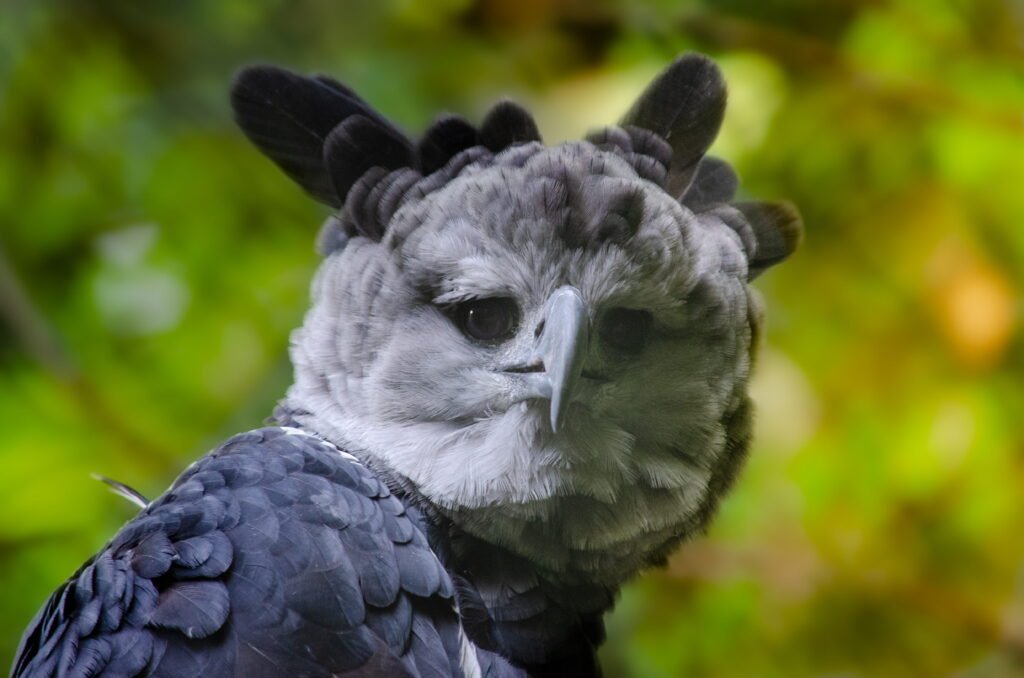
Originally distributed in the Neotropics, from sea level to 800 meters above sea level, it has practically disappeared in Central America and southern Mexico.
A pair of this species requires hundreds of square kilometers to survive, because it is hardly a migratory bird and must feed itself with the resources available in its habitat.
Is the harpy eagle endangered?
Hence, it is very sensitive to habitat changes, especially deforestation, and environmental pollution, and is considered “vulnerable” (IUCN) or “near threatened” in the ICBP/IUN Red Book.
✅ Behavior and reproduction of the harpy eagle
It makes a large nest in the treetops (see: Amazon trees). Its nest can measure 1.5 m, and may be occupied by the couple, along with their young, for several years, and even for their entire lives.
It is a monogamous bird, and remains attached to its partner throughout its life, which can last up to 30 to 40 years.
One of its most outstanding characteristics is its marked sexual dimorphism: the female is larger than the male, in size, weight and wingspan.
The female can measure up to 1.08 m in length and weigh about 9 kg, while the male reaches 0.96 m in length and weighs about 4 kg.
The female harpy eagle lays one to two eggs every two years. In the case of two eggs, which it incubates in its nest, it will only care for and feed the first one that hatches, leaving the other one abandoned.
The second egg is like the necessary insurance to ensure its offspring, and it will only take care of it if the first one suffers a mishap.
Incubation takes two to two and a half months. The fledgling that develops leaves its nest around ten months of age.
The chick remains for months in the care of its mother, and up to two years in the territory of its parents, until it becomes an adult at four or five years old, and becomes independent, building its own nest together with its partner.
Around five years of age it acquires its beautiful final plumage.
Does it make any characteristic sound?
The harpy eagle is generally silent and makes almost no vocalizations. When it does, it squawks, moans, or whistles. Stealth in their movements is one of their greatest attributes to be a successful bird of prey.
The harpy eagle is a colorful, powerful and corpulent bird, to the point that it has been selected as a natural monument in Argentina (1996), national bird of the Republic of Panama (2002), symbol of biodiversity in Ecuador (2002) and image of the Colombian Air Force.
Harpy eagle legend
It is also a symbolic bird in the Amazon worldview. A shaman negotiates hunting actions with the tutelary gods or “owners” of the animal world, transforming himself into a harpy eagle.
He can complete his ancient knowledge and even initiate it in the ability to fly.
In some Amazonian cultures, the harpy eagle represents the spirit of the air. As the shaman’s alter ego, it is the sky, just as the jaguar embodies the earth and the anaconda the water (Reina, Kensinger 1991, Beltrán 2013, Múniz-López 2016).
For coloring
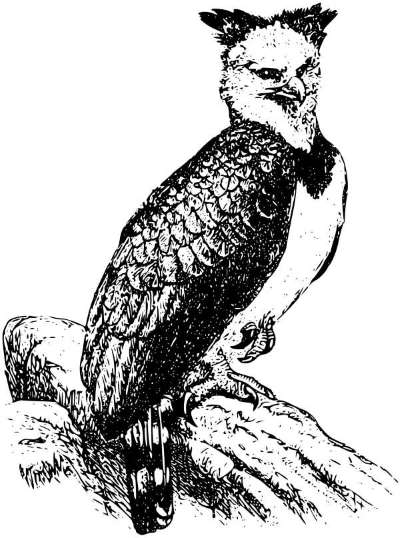
Bibliography
- Aguiar-Silva F.H., Sanaiotti T.M., Luz B.B. (2014). Food habits of the Harpy Eagle (Harpia harpyja), a top predator from the Amazonian rainforest canopy. Journal of Raptor Research, 48 (11), 24-36. (PDF)
- Álvarez E. (1996). Biology and conservation of the Harpy Eagle in Venezuela and Panama. PhD. Dissertation. Gainesville: Florida. (PDF)
- Aparicio K. (2003). Ecología, participación comunitaria y conservación del Águila harpía (Harpia Haryija) en la República de Panamá. Tesis de postgrado. San José: Universidad Nacional de Costa Rica. (PDF)
- Beltrán C. (2013). En busca del jaguar: representaciones y narraciones en el Trapecio Amazónico. Tesis de grado en maestría en Estudios Amazónicos. Bogota. National university of Colombia. (PDF)
- Collar N.J. (1989). Harpy Eagle Red Data Base. World Bird Watch, 11 (3).
- Ferguson-Lees J., Christie D.A. (2001). Raptors of the World. Boston: Houghton Mifflin Company.
- Guerrero M. (1997). Evolución del estado poblacional y etnozoología del águila harpía (Harpia harpyja) en el Ecuador. Thesis. Quito: Universidad Central del Ecuador.
- Muñiz-López R. (2016). Biología y conservación del Águila Harpía (Harpia harpyja) en Ecuador. Tesis de doctorado. Facultad de Ciencias. Universidad de Alicante, España. (PDF)
- Muñiz-López R. (2008). Revisión de la situación del Águila Harpía ( Harpia harpyja) en Ecuador. Cotinga, 29, 42-47.
- Piana R. (2002). Distribución y abundancia del Águila Harpia (Harpia harpyja) en Perú. En: Conferencia de Rapaces Neotropicales. Simposio del Águila harpía. Panama City: The Peregrine Fund.
- Reina R.E., Kensinger K.M. (Eds.) (1991). The gifts of birds: featherwork of native South American peoples. Philadelphia: The University Museum of Archealogy and Anthropology Philadelphia. University of Philadelphia. (Google Books)
- Sánchez-Guillén N.A. (S.f.). Águila harpía: características, hábitat, reproducción, nutrición. Lifeder.com. lifeder.com/aguila-harpia.
- Vargas J. de J., Whitacre D., Mosquera R., Albuquerque J., Piana R., Thiollay J.M., Matola S. (2006). Estado y distribución actual del Águila harpía (Harpia harpyja) en Centro y Sur América. Ornitología Neotropical, 17: 39-55. (PDF)
Related Posts
July 28, 2020
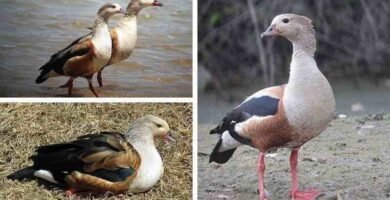
Orinoco Goose
July 26, 2020
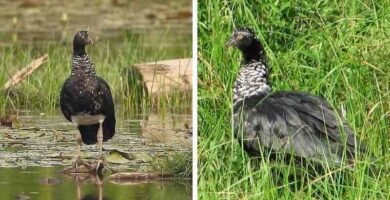
Horned screamer
July 24, 2020

Fulvous Whistling duck
July 22, 2020
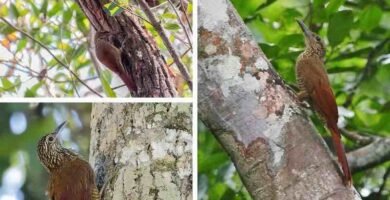
Black-banded woodcreeper (Dendrocolaptes picumnus)
July 20, 2020
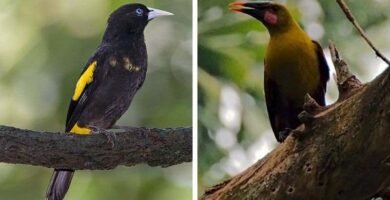
Yellow-rumped cacique
July 18, 2020
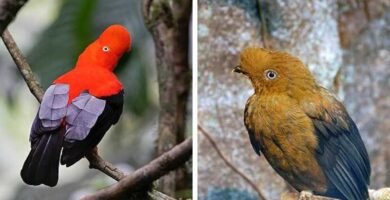
Andean Cock-of-the-rock – Amazon Rainforest Birds
July 16, 2020
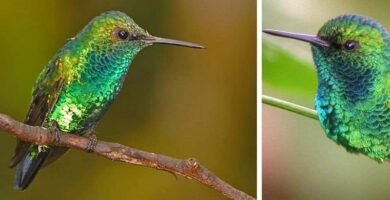
Emerald hummingbird / Emerald chiribiquete
July 14, 2020
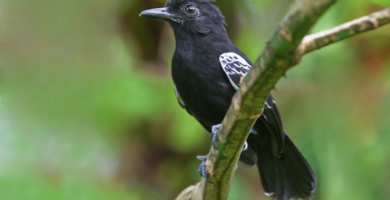
Castelnau’s antshrike
July 13, 2020
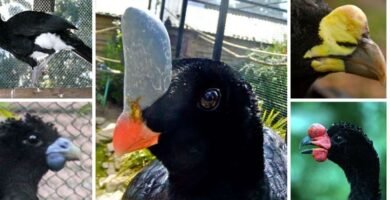
The Curassow from the Amazon Rainforest
This post is also available in:
![]() Español (Spanish)
Español (Spanish)
